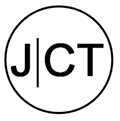Work-life has been extremely busy yet rewarding over the last several weeks. My to-do list continues to grow and my calendar consistently fills with new events, celebrations and appointments. As I returned from a staff retreat in Washington D.C. last week and reflected on my notes I came across a quote that I highlighted from one of the presentations.
“Find harmony instead of balance.”
General Trent Edwards
After reading that quote I began to think about my life and how to create harmony while managing a hectic schedule. Then I remembered my experience as a student and rested on a recipe for success.
I graduated from the best high school in Louisiana, went to a college where I was more than a number and mastered in public relations at the university that takes its students #ToTheTop.
Each time I began a new chapter I walked away with experiences that I will never forget. Excitement came every new academic year, semester and graduation season, but what I was most grateful for were opportunities to gain experience, make friends and be actively involved in my campuses and communities outside of the classroom setting.
In addition to class projects, papers and late night study sessions, cheer practice, chapter meetings and conferences, part-time jobs kept me busy. I look back on one semester in college when I worked three jobs, completed two internships, volunteered at North Oaks Health System and remained involved in numerous student organizations on top of an 18-hour course load.
With more “free time” on my hands, now, I often think about the days when the pages of my planner and to-do lists were full. I wonder how I managed it all successfully. Then I realize that my planner saved me every time.
My grandmother once said “If you have a place for everything and everything in its place, your house will never be out of order.” I’ve never forgotten that piece of advice, and I try to apply it to my life as well. This is where a planner comes in handy.
Blue Sky Planners have been my go-to for the last three years, and I love them.
No matter how expensive, spacious or pretty your planner is, it’s useless if you don’t use it appropriately. Read on to learn how I manage my planner as a tool to bring harmony to the hectic schedule I maintained and all responsibilities that came with it. Real World Recipe… Coming right up!
Ingredients:
- Planner
- Pen
- Content (syllabuses, schedules, etc.)
Instructions:
1. Write all important dates and deadlines in the calendar section of your planner.
2. Create weekly to-do lists.
3. Refer to your planner three times daily, at minimum.
Optional Toppings:
- The Traveling Stick:
I write down major responsibilities on a sticky note and transfer it each week to make sure nothing gets overlooked. Examples: Personal, Professional, Internship, PRSSA
- The Secret Code:
Multi-colored Pens are perfect for separating academic and professional from personal and social on your calendar. Examples: Deadlines in red; social activities green; meetings and appointments in black, work-related responsibilities in blue, etc.
- The Flashlight:
Highlighters are perfect for things that are left undone at the end of the day or week. This week you don’t forget about them or when you look back you’ll know they need to be transferred or completed. For Items that are transferred I insert a stemless arrow into the checkbox.
Additional Notes:
- It helps me to have a specific time to prepare for the day and week ahead.
I try to leave at least 15 minutes at the end of each work day to plan for the following day and prioritize tasks and responsibilities. Starting each day with a to-do list is extremely beneficial and keeps me from wasting time thinking about what needs to get done or worse forgetting something important. I usually plan for personal life on Sundays.
- Detailed to do-lists are important to making progress on things that need to be done.
Avoid vagueness. Plan steps to complete big projects versus writing the project on your list. Example: Instead of writing “Blog Post” on my list I’ll break it up into specific tasks “1. Draft blog post 2. Collect media 3. draft social media copy 4. Review and edit blog post 5. Schedule blog post 6. Schedule social media posts. By doing this I avoid checking a box for a project with multiple layers in which many have not been completed. Check marks are personally satisfying for me and I enjoy completing every step so I have a mini-celebration with each step. Sometimes it’s as simple as a smile, other times it’s a break from the computer screen.
- Spread your tasks out based on urgency to avoid cramming everything on one day.
I usually schedule projects with deadlines before any others, but still include other tasks that are not as important but should be done. By looking at your list and dispersing tasks and projects throughout the week based on priority, it can prevent you from becoming overwhelmed, stressed or having unchecked boxes at the end of the day.
- Transfer incomplete tasks to the next week to avoid flipping back.
It’s OK if a low-priority project that made it on your list this week doesn’t get done. Try to avoid leaving it undone by adding it to the list for the following week.
I’ve tried many recipes that I now follow regularly and have tossed others. Hopefully this one is one you can add to your collection and share with friends. I’d love to hear about your results. Please share!
XX,
Jasmine C. Tate

